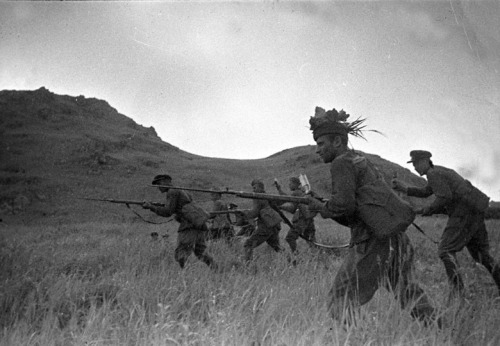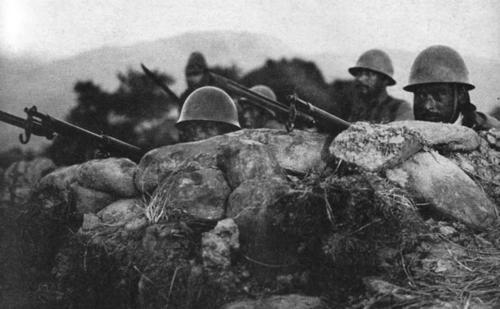Forgotten World War II — The Battle of Lake KhasanTechnically the Battle of Lake Khasan was no
Forgotten World War II — The Battle of Lake KhasanTechnically the Battle of Lake Khasan was not a World War II battle, rather one of the many events leading up to WWII in the 1930’s, what I would call part of the World War II era. After the Japanese occupation of Manchura and parts of China, tensions between the Empire of Japan and Soviet Union began to rise. One major bone of contention had to do with border disputes. Small skirmishes and incidents between border guards and soldiers became common, and it was clear that a conflict was brewing. In early 1938 the Japanese Government began to accuse the Soviet Union of tampering with border markers along the border between China and the Khasansky District. Fearing that the Japanese were up to no good, the Soviet Red Army began fortifying the high ground west of Lake Khasan, located around 130 km southwest of Vladivostok. Unfortunately for them, the Japanese intercepted and decoded Soviet messages, and decided to respond in force.Only July 29th, 1938 around 7,000 troops of the Japanese 19th Division crossed the border and engaged Soviet forces, at one point successfully surrounding and annihilating 300 Soviet soldiers and repelling 300 others. At first the Soviet defenders were forced to fall back under the onslaught. However by August 2nd, Soviet reinforcements would begin pouring into the region. Over the next week around 23,000 Soviet soldiers, 350 tanks, 230 artillery, and 250 aircraft arrived. With overwhelming force, the Soviets answered with a massive and powerful counterattack. The Japanese were especially at a disadvantage, with only 37 artillery pieces, no tanks, and no aircraft. One Japanese artillery officer noted that the Soviets fired more shells in a day than what the Japanese did during the entire battle. By August 9th, Japanese forces began to break under the Soviet counterattack. On August 10th, the Japanese sued for peace, and the fighting stopped on August 11th. Japanese forces lost 526 men, with another 1,000 wounded. While the Soviets were victorious, they suffered terrible casualties, with 792 killed, over 3,000 wounded, and 46 tanks destroyed. Because of the high casualties, the Soviet commander, Vasily Blyukher, was tortured and executed by the NKVD during Stalin’s purges.The Battle of Lake Khasan would not be the last incident between the Soviets and Japanese. A year later, the Japanese Kwantung Army would attempt a massive full scale invasion of Soviet allied Mongolia. During the Battle of Khalkin Gol, at least 100,000 men total took part in the battle. In the end the Soviet Army dealt the Japanese Army a devastating thumping, convincing the Japanese that they should steer clear of further conflict with the Soviet Union. -- source link
#history#wwii#soviet union#red army#japanese army#japanese history#soviet history



